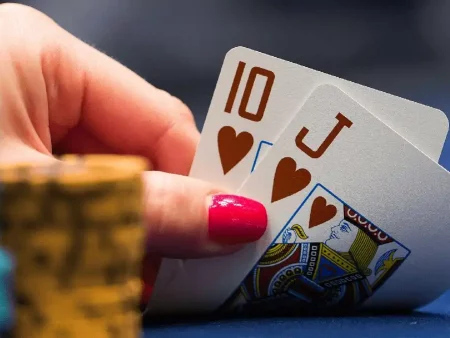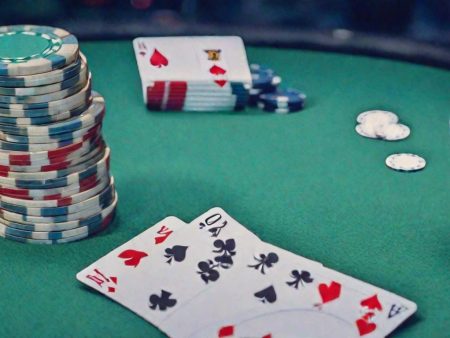The postflop phase in poker begins after the community cards (flop) are revealed and continues until the final showdown. This phase plays a crucial role in determining the outcome of the hand, where players must make strategic decisions based on their own cards, the community cards, and their opponents’ actions.
Understanding postflop strategies is essential for any poker player aiming for success. This stage offers various opportunities to apply tactics, read the board, and analyze opponents’ moves. Let’s explore some key strategies and tips for postflop play.
Effective Postflop Tactics
Before diving into poker, it’s essential to choose a trustworthy online casino to ensure fair play. Avoid unreliable bookmakers and always opt for well-established platforms. Preparation is key before entering a postflop situation. Professional players often use a variety of tactics, which can vary based on the situation and your opponents’ behavior.
Aggressive play can involve raising and betting to pressure opponents into folding weaker hands. Alternatively, passive play like checking and calling can help control the pot and keep opponents in the game, potentially allowing you to call their bluffs. Your strategy should be adaptable depending on the dynamics of the game. Pay attention to the board texture. If there’s a potential straight or flush, the community cards can significantly influence the strength of your hand. Players holding such cards could easily win the hand, so it’s crucial to assess these factors.
The ability to read your opponents is paramount during the postflop stage. By analyzing their betting patterns and overall behavior, you can gain valuable insights into what hands they may hold. This will help you decide when to bluff or when to call their bets. Controlling bet size is another key aspect. Overbetting can scare off opponents, while betting too little might allow them to catch up. The right bet size maximizes your potential winnings and minimizes the risk of giving away too much information.
Read also: Poker hands and their reading in online play.
Players should also be mindful of their defensive and aggressive strategies. A defensive approach involves waiting for a strong hand to develop, while an attacking style pressures opponents into folding by forcing them to make tough decisions. Always be flexible in your approach and adjust your strategy based on your hand and your opponents’ behavior. Learn from every postflop encounter by reviewing your past decisions. Mistakes are part of the learning process, and understanding where you went wrong will help you refine your strategy moving forward.
Finally, avoid becoming predictable. Mix up your tactics and vary your play style to keep your opponents guessing and unable to read your actions easily. Mastering the postflop phase is about understanding which tactics to apply based on the context. Continuous learning and adaptation are essential to becoming a skilled and successful poker player.
Preflop Strategies for a Successful Game
The preflop stage is just as important as postflop, setting the tone for the entire hand. This phase occurs when players receive their hole cards and make their first decisions. The strategies you employ during this stage can greatly influence your success during the postflop phase. One fundamental approach is to play tight by sticking to only strong starting hands. This minimizes the risk of playing weak hands and forces you to make more conservative decisions early on.
Position is a critical factor in your preflop strategy. Playing from later positions offers more information about other players’ actions, allowing you to make more informed choices. Conversely, players in earlier positions need to be more cautious and often opt for stronger hands. Adapt your strategy based on your opponents’ style. If your opponents are tight (playing conservatively), adjust your betting size to create more uncertainty. If they play aggressively, take a more cautious approach and avoid getting involved in large pots unless you have a strong hand.
Another important consideration is the size of your bets. Small bets can invite too many calls, while large bets may scare off weaker hands. It’s important to balance your bets based on the size of the blinds and the table dynamics. Don’t limit your strategy to just the strongest starting hands. Mix in some bluffing and include a variety of hands in your range to avoid being predictable.
Effective bankroll management is essential for long-term success. Never risk too much of your stack in a single hand, as doing so can lead to significant losses. The more you study and practice your preflop decisions, the better you will be at reading situations and making successful plays in the later stages of the hand.
Types of Preflop Bets
In poker, betting strategies are diverse and depend on the positions of your opponents and their preflop actions. Here are some common types of bets:
- Counterbet: Made by the player who raised preflop. By continuing aggressive play, the player maintains the initiative on the flop.
- Donkbet: A bet made by a player who was passive preflop but suddenly takes the initiative on the flop. While this was once considered weak, it’s a tactic that has gained popularity.
- Float: A call made on the flop with the intention of taking the pot later by betting big on the turn. This tactic is often used by aggressive players who want to pressure their opponents.
- Barrelling: Involves placing large bets, typically more than 2/3 of the pot, across multiple streets (flop, turn, river). A double barrel involves two large bets, and a triple barrel involves three.
In poker, combining different betting tactics and lines (sequences of bets) allows players to adapt their strategy based on the situation. A check-raise is an example of a line applied on a single street, while a triple barrel refers to a line involving bets on the flop, turn, and river. Mastering different betting lines is crucial for maintaining unpredictability and making the right plays in various scenarios.
Read also: How to use notes in poker.
By understanding these strategies and tactics, you can adapt your playstyle to become a more effective and unpredictable opponent. Whether you’re dealing with preflop decisions or postflop analysis, your ability to choose the right type of bet and adapt to the situation is key to becoming a successful poker player. In conclusion, if you’re looking for a casino offering deposits from just 5 USD, check out this link for more information on the gambling industry. Did this article interest you? Then you’ll love the content in gambling and casino articles – essential information for every player.
FAQ: Postflop in Poker: Tactical Rules and Strategic Games
What is postflop in poker?
Postflop refers to the phase of a poker hand that begins after the flop is dealt. In Texas Hold'em and similar games, the flop consists of the first three community cards placed face up on the table. The postflop phase includes betting rounds where players assess how their hole cards connect with the community cards and make decisions accordingly.
What happens during the postflop phase in poker?
After the flop is dealt, players evaluate their hands based on the community cards and their hole cards. This is when players make decisions about betting, raising, or folding, depending on the strength of their hand. The postflop phase includes multiple betting rounds: after the flop, the turn (the fourth community card), and the river (the fifth and final community card).
How should I play postflop in poker?
Postflop play requires a strategic approach. Players should assess the strength of their hand in relation to the community cards and the betting behavior of other players. Strong hands may warrant raising or betting aggressively, while weaker hands may require folding or checking. The ability to read the board, bluff, and calculate odds is key to success postflop.
What is a continuation bet (C-bet) in poker?
A continuation bet (C-bet) is a common strategy used by players who raised preflop and then continue betting on the flop, even if the flop doesn't improve their hand. The idea behind a C-bet is to maintain the initiative in the hand and put pressure on opponents, especially if they missed the flop. It's a useful tactic for both strong hands and bluffs.
How does position affect postflop decisions in poker?
Position is crucial in postflop play. Players who act later in the betting rounds have more information about how their opponents are playing. Being in a "late" position (closer to the dealer button) allows you to make more informed decisions based on how others act, giving you an advantage when deciding whether to bet, check, or raise.
What is pot control in postflop poker?
Pot control is a tactic used to manage the size of the pot, particularly when you have a strong but not unbeatable hand. By controlling the size of the pot, you avoid committing too many chips to a hand that could be vulnerable to an opponent’s strong hand. This is done by checking, calling, or making smaller bets instead of raising aggressively.
How can I improve my postflop strategy in poker?
To improve your postflop strategy, focus on understanding the odds and probabilities of making a stronger hand based on the community cards. Additionally, learn to read your opponents' betting patterns and tendencies, as this information can give you clues about their hands. Practice different scenarios and adapt your strategy to the type of game you're playing.






